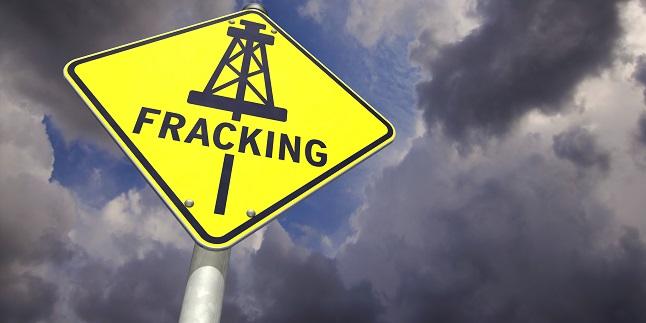Fracking, Other Natural Gas Activity Linked to Hospitalizations for HF Patients
The data add to accumulating evidence that man-made pollution negatively impacts patients with cardiac disease.

Patients with heart failure who live near sites of high-volume horizontal hydraulic fracturing to produce natural gas are at increased risk of hospital admissions, with the oldest and sickest patients being the most vulnerable, new data suggest.
Although it is unclear exactly how so-called unconventional natural gas development (UNGD) adversely affects these patients, researchers say multiple aspects of environment compromise may be involved, including air pollution, water contamination, noise, and traffic. In their study, patients with the highest exposure to UNGD had the highest hospitalization rates regardless of whether they had heart failure with reduced ejection fraction (HFrEF), with preserved ejection fraction (HFpEF), or no clear heart-failure phenotype.
“Initially, a lot of the air pollution and cardiovascular literature focused on MI and stroke outcomes. We know that the cardiovascular system can be impacted by environmental exposures: that literature is there,” Tara P. McAlexander, PhD (Johns Hopkins Bloomberg School of Public Health, Baltimore, MD), told TCTMD. “I think the surprise with this study was how robust our findings were. Adjusting for many factors that we could consider from the electronic health record really didn't make these associations go away.”
McAlexander and colleagues were interested in UNGD because of prior studies showing associations between it and adverse birth outcomes, migraines, and fatigue symptoms. Those clues, together with accumulating data linking air pollution and cardiovascular disease, led them to want to look more closely at hospitalizations for HF in relation to the four unique phases of UNGD: preparation of well pads, drilling, stimulation—more commonly known as “fracking”—and production.
In an accompanying editorial, Barrak Alahmad, MBChB (Harvard T.H. Chan School of Public Health, Boston, MA), and Haitham Khraishah, MD (Beth Israel Deaconess Medical Center, Harvard Medical School, Boston, MA), say the effect size found in the study seems too big to be explained away by an unmeasured confounder.
“Moving forward, we need to better understand the mediating effects by air and water pollutants, as well as particle radioactivity, and the existence of racial disparities in the fracking impacts,” they write. “We also need a better understanding of the effects of various environmental exposures on cardiovascular health.”
Fracking Concerns
McAlexander and colleagues examined the health records of 9,054 patients with HF living in Pennsylvania. Detailed information on residential addresses was created to show community locations, latitude and longitude coordinates in relation to UNGD sites, and residential distance to major and minor roadways. The researchers also calculated a measure of community socioeconomic deprivation.
Compared with patients who were not hospitalized, those who were had a greater incidence of chronic obstructive pulmonary disease, CAD, diabetes, and chronic kidney disease and were more likely to die. They also had a higher mean Charlson Comorbidity Index at baseline. For each of the four phases of UNGD, people with the highest exposures had greater risk of hospitalization. In the case of fracking, the odds ratio for hospitalization in the highest exposure quartile was 2.25 (95% CI 1.56-3.25) for HFpEF patients and 2.09 (95% CI 1.44-3.03) for those with HFrEF compared with those who had the lowest exposures. Sensitivity analyses using several models did not change the main findings.
To TCTMD, McAlexander said looking at HF patients and their hospitalizations in relation to the activity phases of UNGD, as opposed to just measuring the distance that people lived to active drilling sites, informs the existing literature and may help to better characterize the potential harms of the exposures to individuals.
“It can help us pinpoint where may be a good point for intervention to help remove this exposure or lessen it for communities nearby,” she said. “The different UNGB activity metrics reflect different exposure scenarios. For example, the pad preparation and the stimulation, which is the fracking metric, represent a substantial amount of truck traffic. Truck traffic is PM 2.5. It is nitrogen dioxide, a precursor to ozone and carbon dioxide, and we know that these things are harmful, especially to cardiovascular patients.”
Alahmad and Khraishah say the study represents a unique epidemiological look at thousands of HF patients living in nearby communities affected by UNGD. Still, they say many challenges remain to fully understand the potential harms.
“First, exposure assessment needs to be advanced toward understanding the specific mechanisms in which UNGD can affect health outcomes. For example, a recent study showed that particle radioactivity (particulate matter that transports high energy alpha-emitting radionuclides from the external environment to human tissues through inhalation) is a potential exposure pathway of UNGD,” they write.
The editorialists add that fine-tuning of “cause-specific cardiovascular morbidity and mortality along with translational studies are needed to further characterize the pathophysiological pathways.”
L.A. McKeown is a Senior Medical Journalist for TCTMD, the Section Editor of CV Team Forum, and Senior Medical…
Read Full BioSources
McAlexander TP, Bandeen-Roche K, Buckley JP, et al. Unconventional natural gas development and hospitalization for heart failure in Pennsylvania. J Am Coll Cardiol. 2020;76:2862-2874.
Alahmad B, Khraishah H. Unconventional natural gas development and heart failure: accumulating epidemiological evidence. J Am Coll Cardiol. 2020;76:2875-2877.
Disclosures
- McAlexander, Alahmad, and Khraishah report no relevant conflicts of interest.


Comments